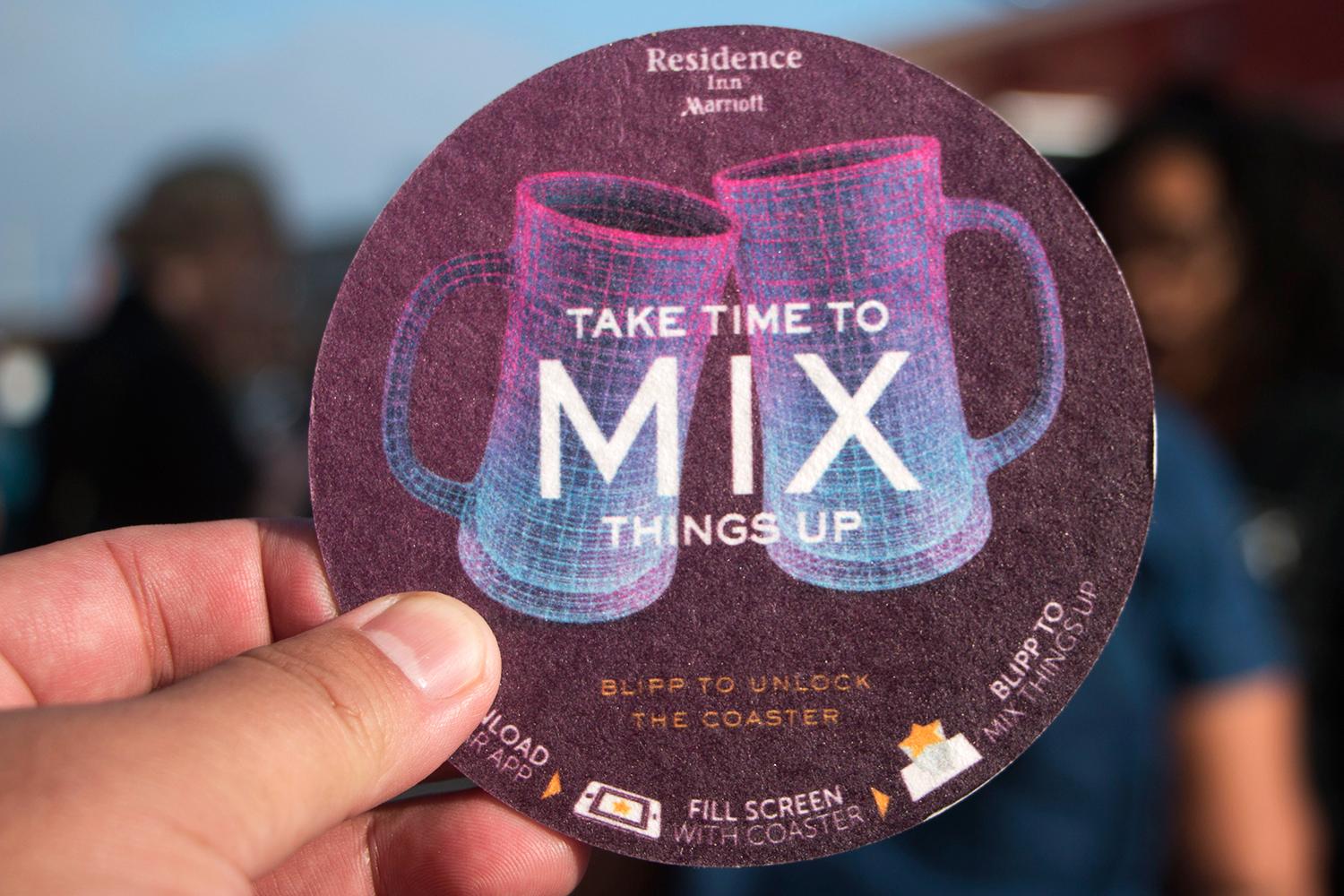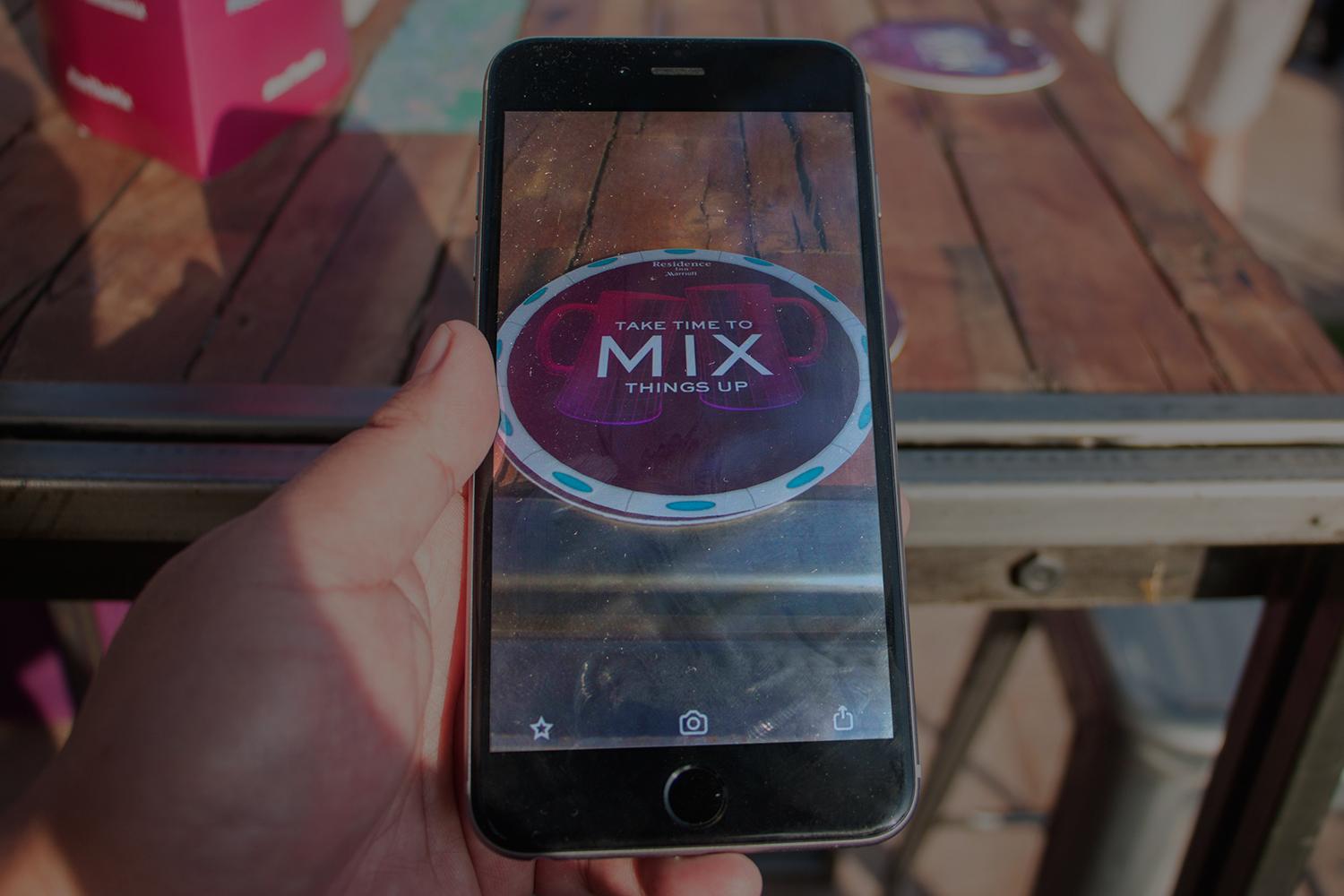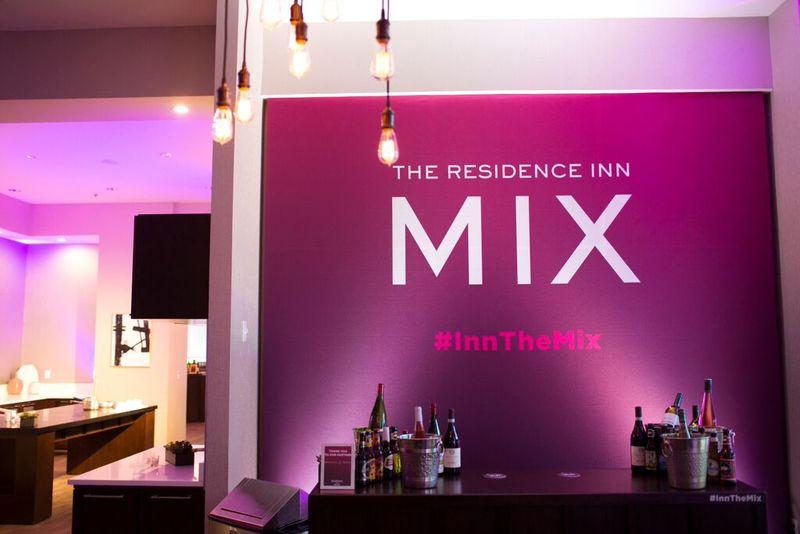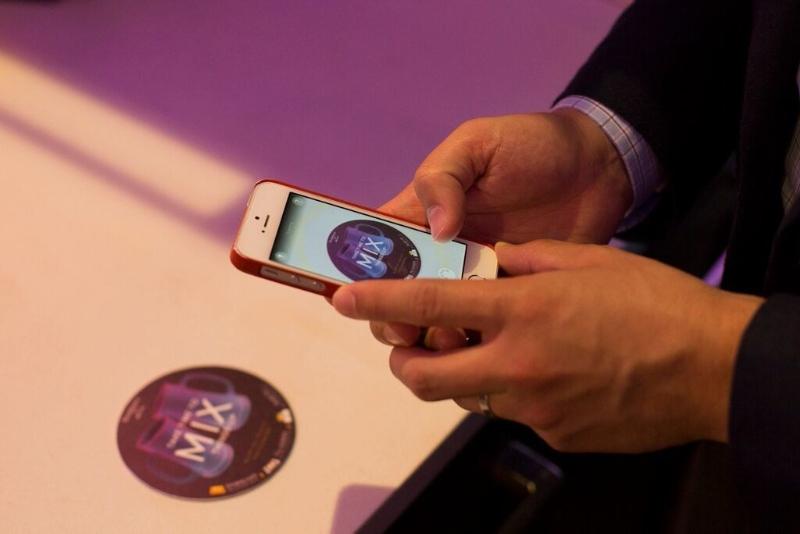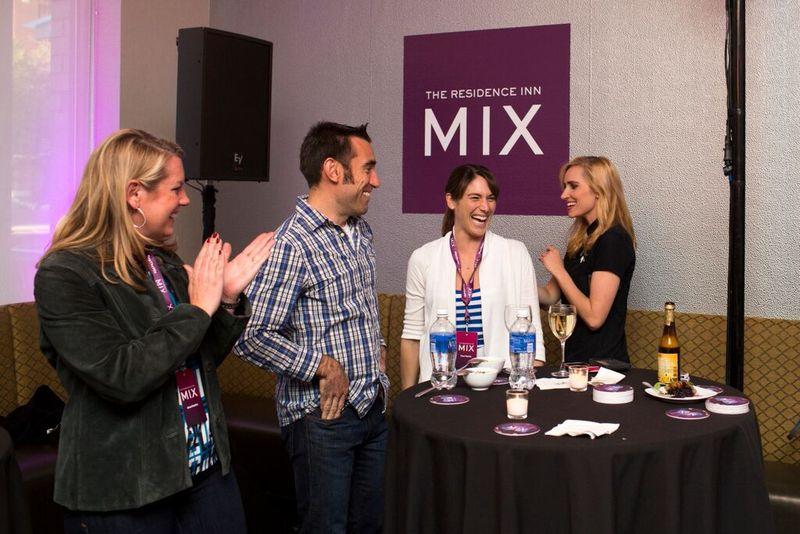
“Younger travelers want variety and sometimes want to relax and stay in rather than fight their way into the trendiest bar or restaurant in the city,” says Diane Mayer, Residence Inn Vice President and Global Brand Manager. “Our research found that more than half of frequent business travelers are looking for something to do without needing to leave the hotel on long stays. They want to meet others and experience the local area without the hassle of always leaving the hotel to do it – so we’re bringing local to them.”
To keep these millennials on their premises, the company launched the Residence Inn Mix – a program of themed nights where guests socialize with one another at a fire pit and nosh at the hippest food trucks three nights a week. For the Mix, they’ve partnered with Blippar, a “visual discovery” app where users can use the app’s image recognition and augmented reality technology to mingle.
We recently attended the Mix launch at Residence Inn’s Redondo Beach location in California (the company launched the program at locations in Austin, Boston, Los Angeles, and Washington, D.C, but it’s now available nationwide), which included DJs and an epic food truck battle, although event themes will change. The technology aspect isn’t noticeable at first, and Residence Inn doesn’t outright advertise it. All guests received “blippable” beverage coasters allowing them to unlock interactive experiences including trivia games, customizable selfies, and suggested food and beer pairings. In order to unlock the features, users simply open the Blippar app, point it at the coaster, and then choose which feature you want to experience. If you’ve wondered how augmented reality is being used in hospitality, this is one example.
The AR experience
You’ve heard of virtual reality, but how about augmented reality? In a nutshell, augmented reality is seeing a live view of an environment where sound, video, or graphics are added, altering the environment in real time. A simple way to explain the difference between virtual and augmented reality is that VR essentially tries to put you in another reality (e.g., Oculus Rift) while AR recognizes the world around you and gives you additional content to enhance it. (Think Iron Man’s cool interactive helmet.)
There is already a wide array of uses for augmented reality, including architecture, education, emergency management, gaming, medicine, military, and much more. In the near future we might see a car windshield that will give you a warning of a potential hazard, or directions on the road in front of you. It’s basically an overlay that you’re seeing on your screen, or in this case, your windshield. While there are practical purposes, companies are also looking into AR to bring entertainment value – and monetize it. If Residence Inn guests and visitors enjoy using the technology, it could mean repeat business or more money spent on food and drink.
Blippar
With Blippar, the app (for iOS, Android or Windows Phone) uses your mobile device and uses two technologies – image recognition and augmented reality. “Our technology is basically reading the dynamic information,” explains Blippar Vice President Patrick Aluise. “Once it recognizes the colors and shapes within an image or an object, it will deliver an augmented reality experience or an enriched media experience.”
“Once Blipper recognizes the colors and shapes of an object, it will deliver an augmented reality experience.”
At the moment, Blippar is limited to only recognizing objects with companies and organizations Blippar has partnerships with (for example, the company is working with the Metropolitan Museum of Art to add mobile-based AR experiences to how visitors view artwork).
“The way we built the company was through branding with companies, and everything we’ve done from the beginning until now has been custom created by our creative and development team,” Aluise explains. Along with the Residence Inn, other successful Blippar campaigns include Anheuser-Busch, General Mills, Heinz, IBM, Pepsi, Vogue Germany – just to name a few.
Although the app is mainly used for marketing purposes, Blippar is launching their new self-publishing tool, Blippbuilder, that will allow any brand, media company, or creative agency the ability to translate all of their physical properties (print ads, billboards, packaging, etc.) into interactive augmented reality campaigns.

According to Aluise, the biggest challenge for Blippar in the future will be awareness. “We’re more than an app but on some level we have to think like an app, which is getting more people to use it multiple times a day,” he explains. “We hope to see people blipping their cereal box in the morning, blipping their Subway card to see what the upcoming schedules are, blipping out of the newspaper to get the news feed beyond the static news – that kind of thing.”
Experimental technologies in hospitality
Residence Inn’s Mix isn’t the first time new technology is being trialed in hotels. Sister company, Marriott Hotels and Resorts, continuously experiments with new tech concepts. Last year, Marriott employed virtual reality and the Oculus Rift to create a virtual travel experience. There’s no guarantee they’ll be successes, but these programs have a similar goal: how to get today’s tech-savvy hotel guests – millennials in particular – to stay at their properties.
